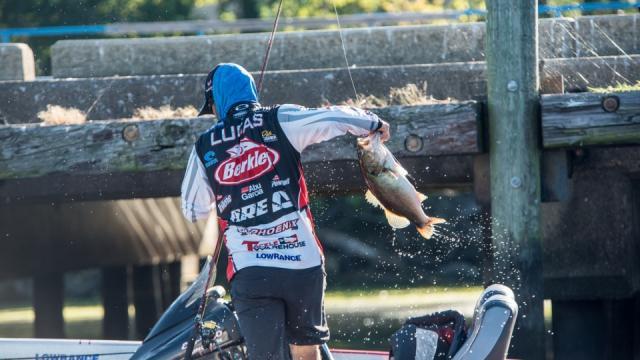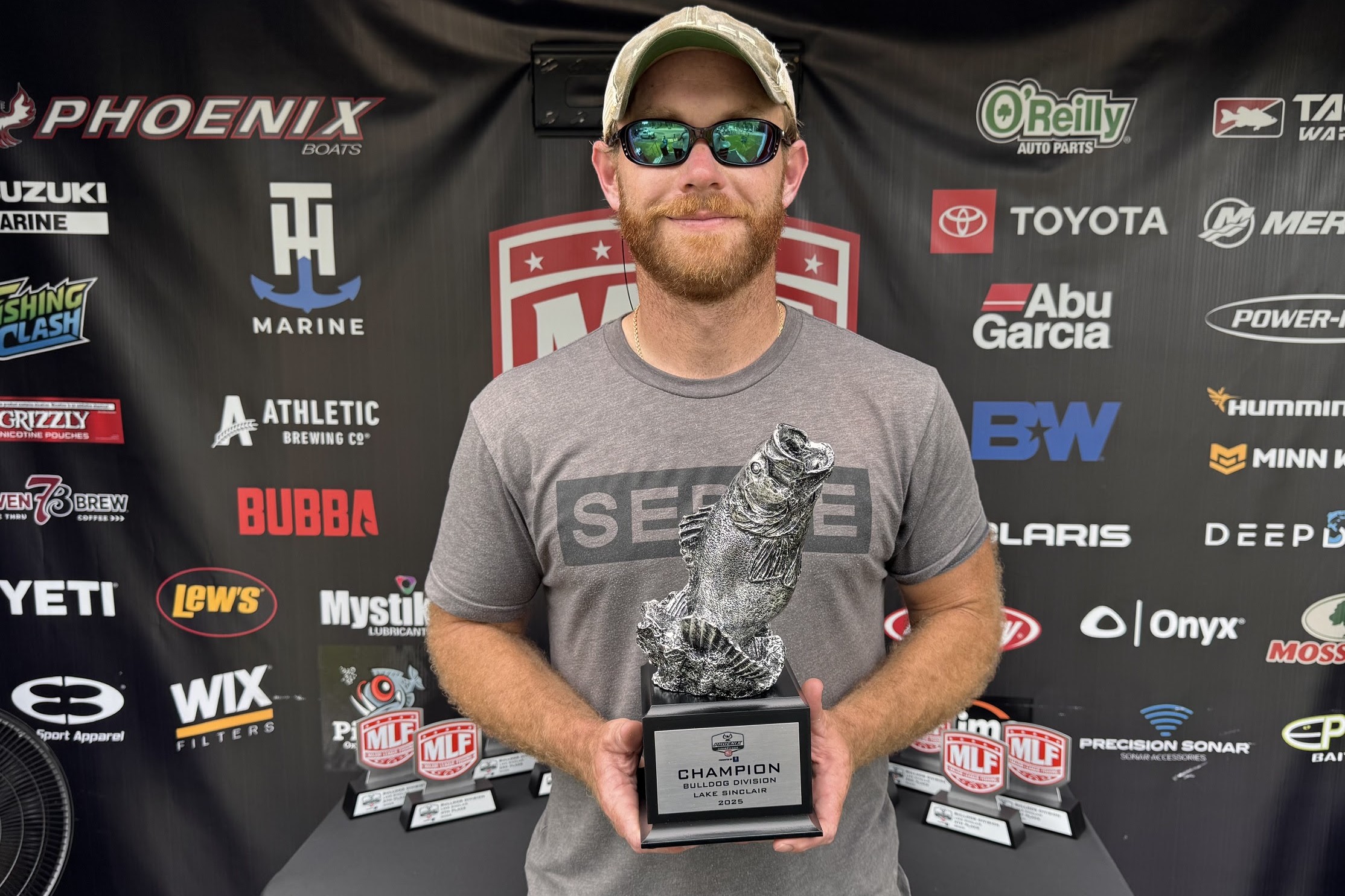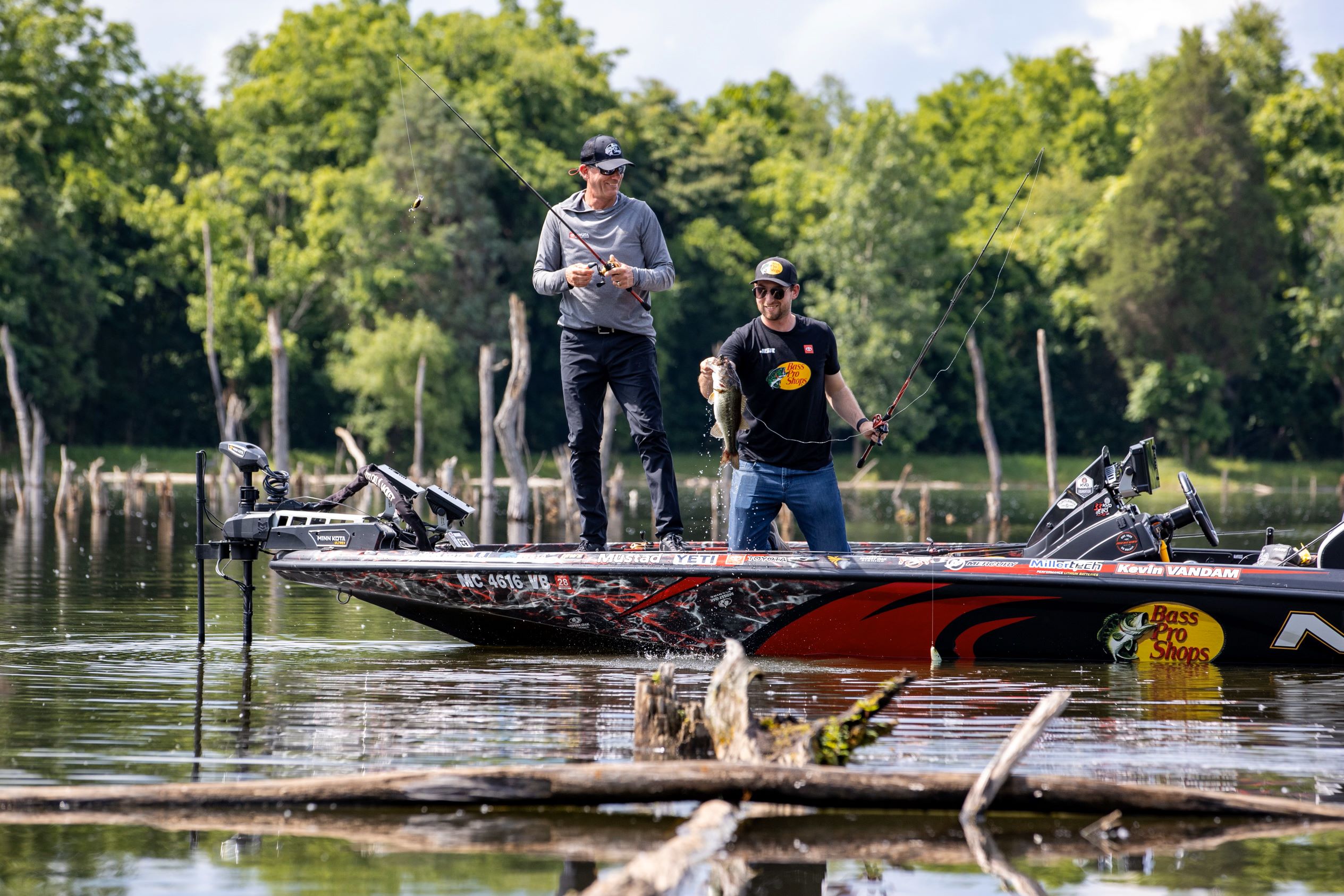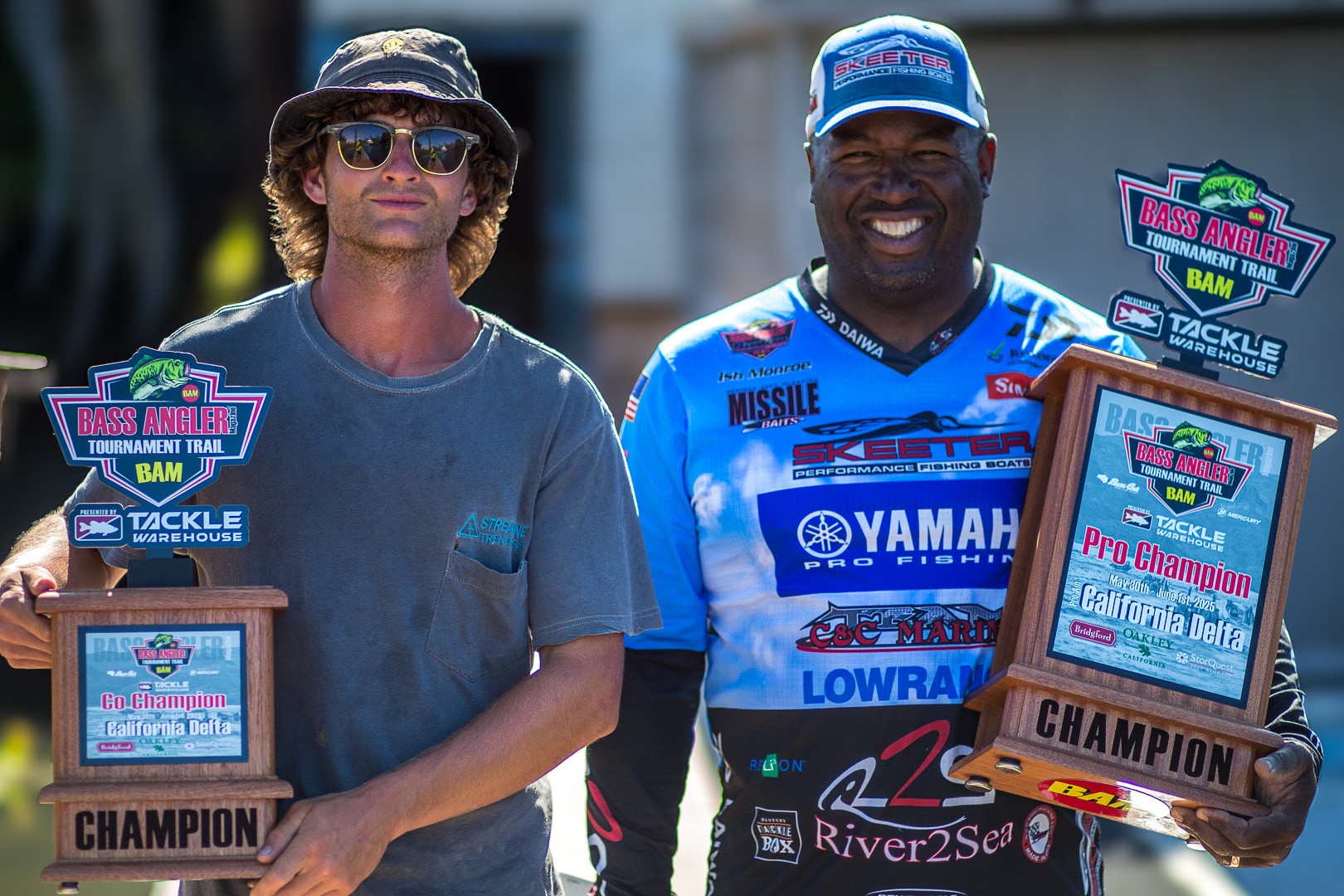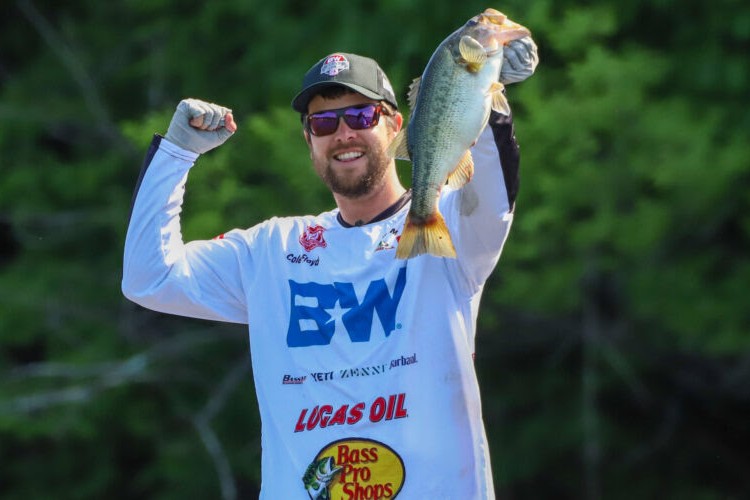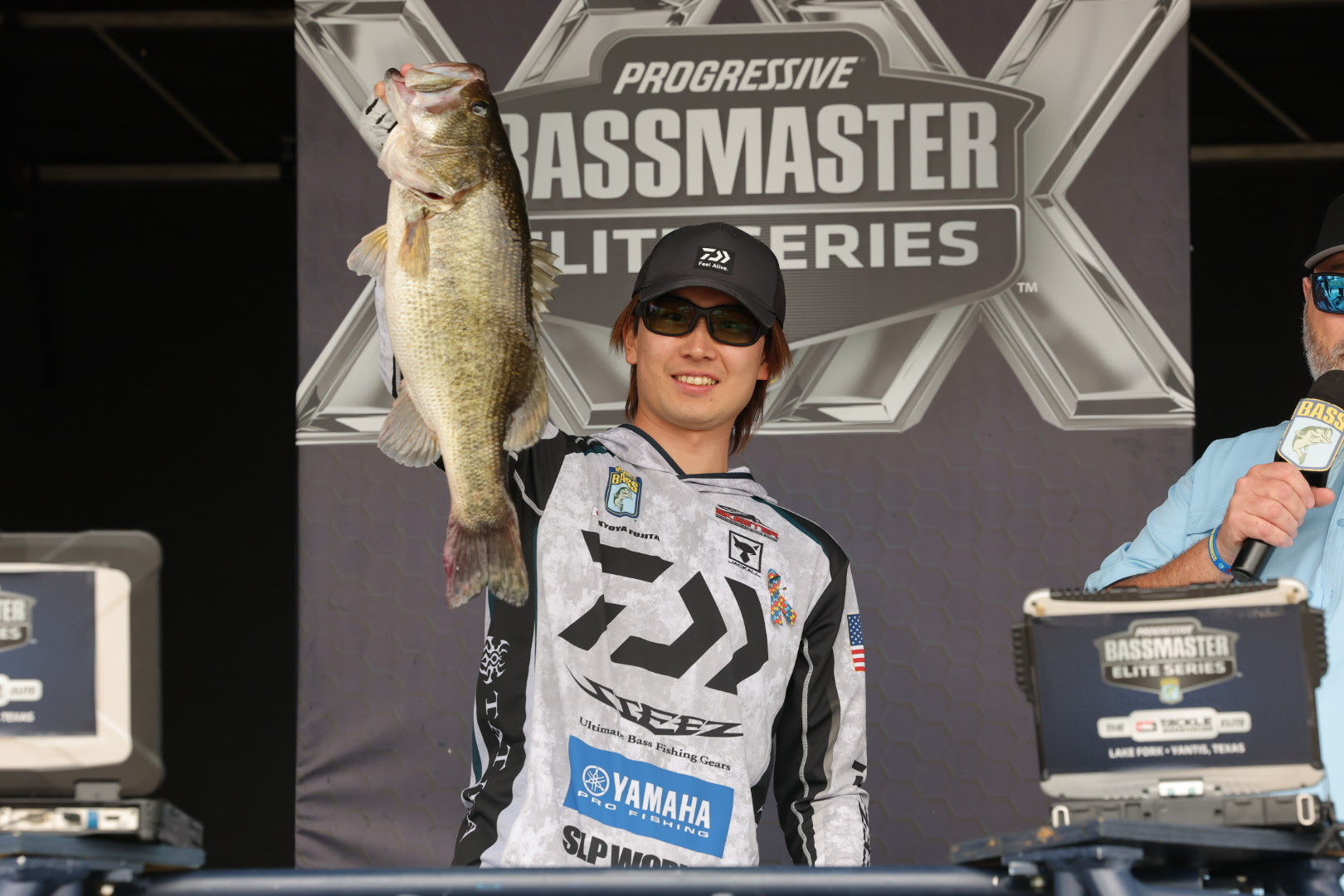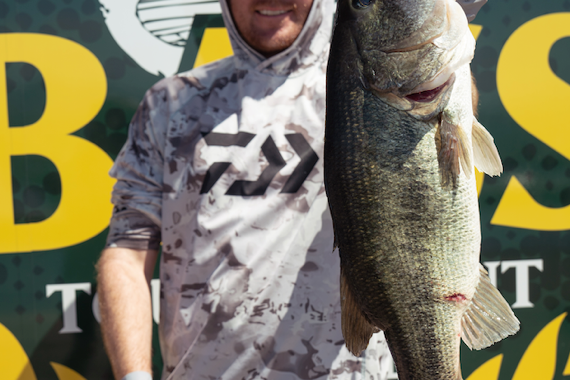Tidewater Bassin’ – To Run The Tides, Or To Camp?
For instance, when the water rises many, though not all, fish go with it to take advantage of fresh feeding opportunities. Likewise, as the tide goes out and the water falls, fish concentrate along the deepest edges of whatever cover they are using, whether that is a laydown log, a big grass bed or one of those hundred-yard-long docks we find on the shallower banks of the St Johns.
Hank Parker figured it out decades ago and that simple understanding of how fish move during tidal fluctuations allowed him to follow them with a spinnerbait and win a big Bassmaster tourney on the big river.
Some guys consult tide charts and run miles to get on an area during a particular stage. Generally, the last 2 hours of outgoing through the first hour of incoming is considered best because bait and bass are concentrated in the last available deep water, thus creating a fairly predictable scenario.
As the Bassmaster tournament trails visit various tidewater fisheries this summer, an age-old question comes to mind: “Do I have to run miles of river and keep pace with a particular tide stage, or can I win by camping in an area, maybe on one great spot, and riding out the tidal fluctuations?”.
At the Bassmaster Open on the James River last week most successful anglers followed the low end of the tide as they cast to any hard cover that might break the current, which needed to be moving in order to produce bites.
The main constant for winner, Charley Hartley was a lure, not a location. Hartley used a ribbon-tailed worm on a 3/16 oz. sinker and hit as many as 500 pilings, logs, barges, etc. each day.
Runner-up Cody Pike relied on a single deep spot (“deep” meaning 5-to-10 feet) to catch his limit before looking for difference-making kicker fish, but even in the honey hole tide stage was a factor. It had to be low and moving.
David Dudley placed 3rd by “tidal junk fishing” – running the low end of the tide phase and fishing any available hard cover.
 Jason Christie rode up shallow and back out as tides moved across the grass flat where he caught his fish on the Potomac. photo by Seigo Saito/B.A.S.S.
Jason Christie rode up shallow and back out as tides moved across the grass flat where he caught his fish on the Potomac. photo by Seigo Saito/B.A.S.S.
But when the Elite Series fished the Potomac recently, the top finishers, including winner, Justin Lucas, all camped. Lucas stayed on the same area for 4 days and used different tactics to keep with the changing tides.
Jason Christie stayed with a big grass bed. He rode the water up as it rose into the shallows. He had better action when it dropped and he focused his efforts on the outside edges where the bass congregated at low tide.
Brent Ehrler fished a big ditch that ran through a big flat. He rotated through three different lures to get the job done.
So there are 2 approaches to tidewater success. Which camp are you in – the camping camp, or the tide-running camp?
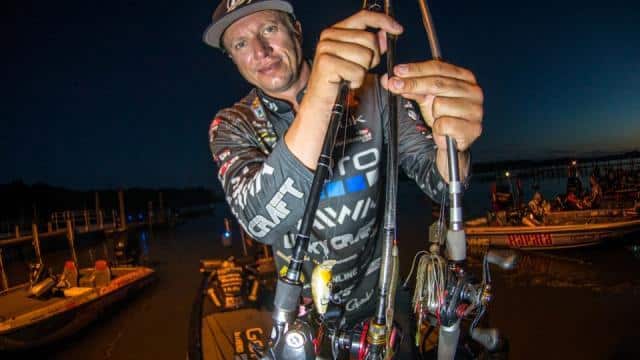
Brent Erhler scored well on the Potomac by cycling through a variety of lures rather than trying to keep pace with the tides by running to numerous spots. photo by Garrick Dixon/B.A.S.S.











